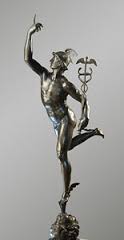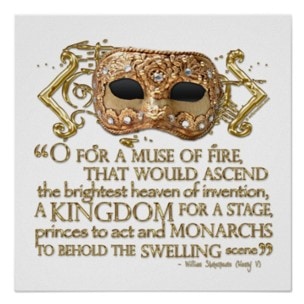On the day of the heliocentric alignment between the Magister Musicae Mercury and the asteroid/Muse Calliope in Aquarius (see 2025 Solar Rituality and Ephemerides), we present chapter 2 of the text Academy of the Muses:*
2. The Fourth Force
Invoking the Muse, listening or remembering the Voice of Spirit, mastering “the latent force in sound, speech and music” (the Language or fourth force/shakti of Nature: the Mātṛkāśakti or Mantrikashakti) is the nature and dignity of the Fourth Human Hierarchy: ourselves in essence, Solar Angels or Sons of Mind, winged Messengers between the worlds of spirit and matter (Mercury, the Messenger of the Gods, is the Regent of the 4th Hierarchy and the 4th Ray of Harmony). We, human Monads, Spiritual Souls called to create the Good, the Beautiful and the True out of Love(Buddhi-Manas).
“The latent force in Sound, Speech and Music”: and so, the initiated Philosopher Plato, the Thinker, meant by Music – the Muses’ art – the creative power of Sound and its rhythms, Pythagoras’ Science of Harmonics.18
For esoteric occultism, “Sound is the first Creator Agent of Space,” 19 and the Iridescent Light of Thought reveals its Song and Dance: as a luminous Courser, Thought traverses Space tracing conscious Rays or Directions of Fire (Fohat), guided by the Voice of Spirit of the cosmic, solar and planetary Composers, the Logoi:
“The wind (prana or Spirit) bloweth where it listeth, and thou hearest the sound thereof but canst not tell whence it cometh nor whither it goeth. So is everyone that is born of the Spirit.
Two ideas are conveyed in this thought-form, —those of an emanating sound and direction, and that which is the result of the sound. This is evolution and the effect of the directing energy or activity of Spirit.”20
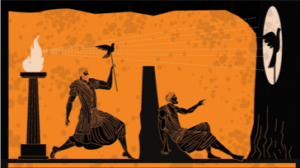 In Book VII of the Republic, where the famous image of the cave is found, Plato describes the ascent from doxa (opinion) to episteme (knowledge) and from eicasia(imagination) to noesis (intellection) and the subsequent descent to state government as a training requiring:
In Book VII of the Republic, where the famous image of the cave is found, Plato describes the ascent from doxa (opinion) to episteme (knowledge) and from eicasia(imagination) to noesis (intellection) and the subsequent descent to state government as a training requiring:
– the science of number (arithmetic: the number per se),
– plane geometry (number in space),
– astronomy (number in space and time),
– the science of harmony (number in time): Music as the science of number relationships.
This science of harmonics is inextricably linked in the quadrivium to the other three disciplines.
And, in Plato’s perspective, they must all be cultivated “in the abstract”: at the level of the higher mind.
“Today we are accustomed to regard arithmetic, geometry, music and astronomy as distinct fields of study: at one time, however, this split was far from obvious and scholars regarded these disciplines as different faces of a single, multifaceted knowledge. A philosophy that shines through well in The Golden Verses of the Pythagorean School:
«Thou Shalt likewise know that according to Law,
the nature of this universe is in all things alike.»
According to the ancients, the crossroads of the Quadrivium was thus to be found in number, the common denominator of all four disciplines: number is in fact the founding element of arithmetic, just as geometry is but the distribution of number in space. Even music (or harmony) can be defined as “number in time,” while astronomy was for the ancients the discipline in which number was expressed in both time and space.”21
And today, the Science of Sound, Harmonics, shines with new life in the Fourth kingdom, and teaches that value(sound quality) and number are corresponding aspects of the same Creator Principle.
Thus, the Fourth Force or Fourth Human Hierarchy, with the Fourth Human Kingdom as its current body of expression, is and corresponds to Number Four, to the Fourth Ray of Harmony through conflict, to Mercury–Ermes, the Mind illuminated by Love – He who is like the Sun, like Apollo, the Solar Angel, the Musagete.
Both are Musicians, or Magistri Musicæ, as well as Dionysus:
“The Muses, daughters of the universal father Zeus and heralds of his spirit, are also intimately related to the other great sons of Zeus: Apollo, Hermes, Dionysus, Heracles.
The covenant with Apollo is clearly expressed in the well-known appellation of the god as “musagete” … As belonging to the Apollonian circle, the Muses appear already in the Iliad, as conspicuously as they will in later times in poetry and figurative art. At the end of the first book they sing at the banquet of the gods on Olympus, and Apollo plays on this occasion the phorminx, the zither. As soon as Apollo appears on Olympus, it is said in the Homeric Hymn (189), the Muses begin the song.
The god, according to the Hesiodic poem (Theogony, 202), is depicted on Heracles’ shield along with the singing Muses. From the Muses and from Apollo descend all the cantors and zither-players, … even Apollo’s brother Hermes, the guide of the Nymphs [the astral waters], is close to the Muses; after all, it was he, as the Homeric Hymn relates, who had invented the lyre and then gifted it to Apollo.
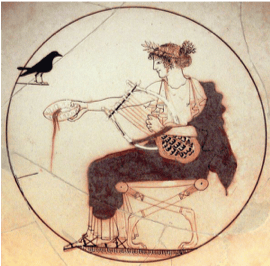 … Of particular significance is that the Muses also appeared in the circle of Dionysus, so that the god of intoxicating music might well have been called, as Apollo so often is, Musagetes. [But originally Musagetes is Sun-Apollo: this is seen from] the very name of their mother Mnemosyne, who, as themselves as goddesses of memory, appears alongside the god of wisdom. Thus, on the two pediments of the temple of Apollo at Delphi are depicted on one side Apollo, appearing with the Muses, and on the other side Dionysus together with the Thiads. But from the moment when in tragedy, which arose from the cult of Dionysus, the culmination was reached in the art of the Muses, the bond between them and Dionysus became indissoluble.” (WFO)
… Of particular significance is that the Muses also appeared in the circle of Dionysus, so that the god of intoxicating music might well have been called, as Apollo so often is, Musagetes. [But originally Musagetes is Sun-Apollo: this is seen from] the very name of their mother Mnemosyne, who, as themselves as goddesses of memory, appears alongside the god of wisdom. Thus, on the two pediments of the temple of Apollo at Delphi are depicted on one side Apollo, appearing with the Muses, and on the other side Dionysus together with the Thiads. But from the moment when in tragedy, which arose from the cult of Dionysus, the culmination was reached in the art of the Muses, the bond between them and Dionysus became indissoluble.” (WFO)
Following the Chorus of Muses singing and dancing to the scores of the Masters of music, wisdom and liberation (the Logoi), is that Middle Way, of the mind enlightened by love, which transforms conflict into Harmony, chaos into Beauty – “the splendor of the true.”
That light uplifting, light of men, I sing,
Nine sweet-voiced daughters of the All-Mighty King,
Who souls ensnared, that life’s abysses bind,
By sacred rites from books that rouse the mind,
From earth-born fateful woes draw up and save;
Who teach to hasten o’er deep Lethe’s wave,
Keep the true way, seek, pure, their native star
Whence they have strayed, whence fallen deep and far
To generation’s shore, where madness runs
To its inheritance of dust.
0 Heavenly Ones,
Quench in my heart this agitated fire,
With Wisdom’s pure noeric words inspire.
Let none seduce to superstition’s sway
From the all-fruitful, gleaming, sacred way.
From generation’s clamorous mazy night
Draw up my wandering soul to purest light;
Grant from ambrosial books deep-laden store
Of Wisdom and that glory evermore
Bestow – heart-soothing eloquence …
(Proclus, Hymn to the Muses)
Remembering Solar Wisdom through the Voice of the Muses, through the “latent force in sound, word and music,” is the master and central way to respond to the Sound and Number of our Fourth Ray (the Soul Ray of the Fourth Human Realm), to win in the Name of the Harmony of the Spheres as Solar Angels (Sign of Scorpio associated with the 4thHuman Hierarchy).
“… The Thinker [Plato] also said, “Learn to revere the Muses, who help you to become heroes. The Muses lead you to achievement, they accompany you in battle and in labor, and greet you with garlands of victory. The Muses transform your sufferings into beauty. The Muses will find you in the gardens that are adorned with the trees of knowledge. The Muses will not abandon those who revere them. Know how to serve the Muses, the Gate-Keepers of the Beautiful.”
Thus the Thinker directed human consciousness to Truth.”22
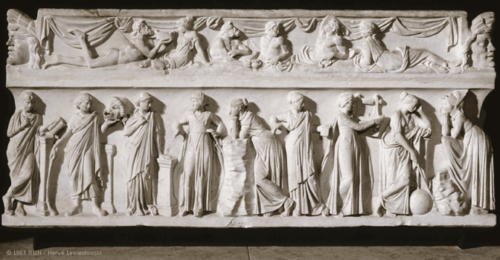
Clio, Thalia, Erato, Euterpe, Polymnia, Calliope, Terpsichore, Urania and Melpomene – marble sarcophagus Roman art 150-160 A.D. (Paris, Louvre)
“The Greeks, we know, recognized23 and named them. The Muses come and go, sing and dance and are living rhythms and all peoples honor them, as a scent and balm of existence. Some social experiments, ancient and modern, pretended to forget them or wanted them domestic and chained, but they failed and fell into sadness …
… Art is therefore the great hope for the harmonious union of the human race and between this and the other kingdoms of nature. What was never achieved with weapons, the goal not reached by fighting religions, the missed objective of all kinds of ideologies, will be reached by Art and the secret Muses who inhabit the spaces and treasure their immensity.”24
“… Remember, Art is the one vital medium of the coming culture.
Through Beauty will you approach.
Understand and remember.
I have entrusted you to pronounce Beauty.
I bid you pronounce Beauty.
You, my daughter, said—Love.
And you, my son, said—Action.
And you, both, said—Beauty.
If you desire the gates to be opened to you, use
My Sign.
I said Beauty, in combat and victory.
I said Beauty, and failure was covered by Beauty.
Mountains blossomed with Beauty.
And you must give entrance to the flowers of Beauty.
Let the children approach.
Bow before Him Who brought the Beauty of the
great Universe.
Understand, there are no possessions—nor decisions,
nor pride, nor repentance.
There is one thing alone—Beauty.
And to you I say:
Guard, expound, and affirm this Beauty.
Therein lies your way.
With Beauty shall I meet those who will come to Me.
And they are already on their way.” 25
Let us therefore meet the Muses, the Song and Dance of the Solar Heart, and let us be pervaded by Their Grace, by the immortal glory of an enchanting word.
* See Academy of the Muses – Introduction and Academy of the Muses – The Remembrance of Heavenly Olympus






